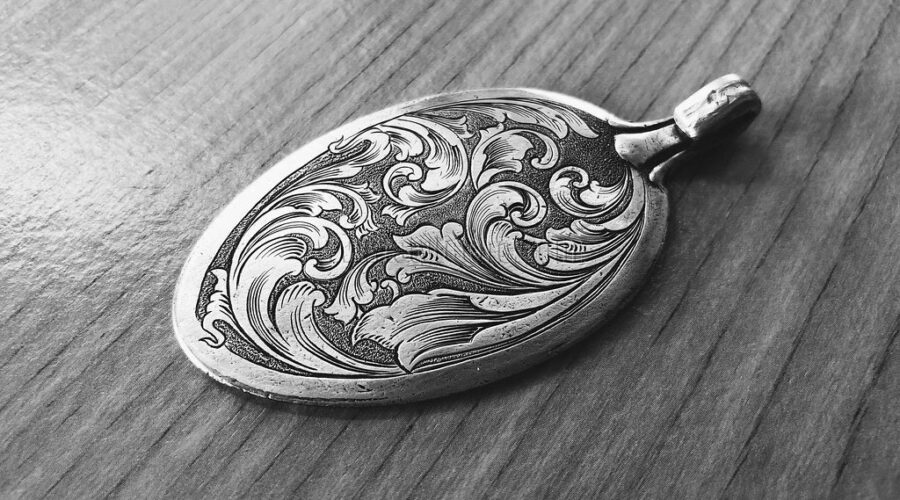Introduction In today's digital age, businesses are constantly seeking innovative ways to reach their target…

Elegance Etched in Metal: Unraveling the World of Metal Engraving
Metal etching is a timeless technique that imbues metal surfaces with complex designs and motifs, turning them into magnificent showpieces, in the field of innovative crafting. This meticulous process involves carefully carving images, or writing onto metal to create objects that exude class and refinement. Metal Engraving has the power to elevate ordinary goods into outstanding pieces that recount tales of skill and dedication, from pricey diamonds to precisely engraved firearms. In this article, we delve into the fascinating world of metal etching and examine its sensations, methods, and hypnotic process for transforming flat surfaces into multifaceted imaginative materials.
What Does Metal Engraving?
Among other things, text, logos, images, numbers, and 2D codes are all marked on metal via engraving. Metal can be engraved in a variety of industries, including jewelry, medicine, automotive, aerospace, and energy, to mention a few. By incising surfaces, engraving is the process of forming letters, lines, or designs. Although glass, plastic, and stone are among the materials that can be engraved, this article will concentrate on metals.
Advantages Of Metal Engraving
- Personalization
Metal engraving has several benefits, one of which is that it may be personalized. Engraving is a technique to add a personal touch to metal objects, whether you want to add a name, date, or message
- Durability
A design that has been permanently carved into metal won’t deteriorate or disappear over time. Because of this, engraving is a great option for long-lasting items like wedding bands or heirloom jewelry.
- Precision
Modern engraving equipment makes it possible to produce incredibly detailed and complicated designs. Other decorative techniques, including painting or etching, cannot achieve this level of detail.
- Versatility
A wide range of metals, including gold, silver, brass, and aluminum, can be engraved. This proves that there is a metal fit for whatever project you may be considering.
Affordability
Even though engraving has several advantages, it is a relatively inexpensive process. It frequently costs less than alternative decorative techniques like enameling or gemstone setting.
Disadvantages Of Metal Engraving
- Only for Metal Surfaces
The fact that engraving is only possible on metal surfaces is one of its main drawbacks. This means that you will need to come up with a different technique. If you wish to engrave jewelry made of a different material, like glass or wood.
- Can Take A Long Time
The fact that engraving might take a lot of time, especially if you do it by hand, is another drawback. It may take hours or even days to finish the engraving if you are working with a complicated design.
- Equipment Specialized is Needed
You will require access to specialized tools if you wish to etch metal surfaces. This equipment can be pricey, which might put some people off. To acquire decent results utilizing this equipment, you’ll also need some experience.
Common Methods Of Metal Engraving
- Engraving with a Diamond-Drag Scratch
This method makes use of a non-rotating tool with a diamond tip that is shaped like a cone. The metal component is left with an impression after the engraving tool passes through it. As precise and superior in quality as hand engraving is diamond-drag engraving. The width of the stroke does not change, but its depth varies. For engraving jewelry and prizes on sensitive metals, diamond drag is advised.
- Burnishing
Burnishing is done with a rotating tool that applies little pressure. A carbide or diamond cutter with various tip widths is used to remove the top coating or layer of material, leaving behind a smooth, polished surface. Burnishing can sometimes be used in place of diamond drag. Burnishing is still a relatively new technique for many shops.
- Rotary Engraving
Using a single or multiple-fluted cutting tool, the material is removed from metal components in this method, leaving a trough where the exposed core is located. It results in a letter or other item being fully severed or having a deeper incision. In most applications, the cut depth is determined by the spindle micrometer setting.
- Laser Metal Engraving
It is done by utilizing a powerful laser beam to heat the metal surface above its melting point. This process is also known as sublimation, as it transforms the material directly from a solid state to a gas for laser engraving. A cavity is left behind as the surface material evaporates. It leaves a deep, noticeable etching with a 3D surface that can be seen and felt. This approach is perfect for intricate designs, small lettering, and elaborate images since it offers high precision and accuracy.
Conclusion
We hope that this article will help you understand how metal engraving works. For more information related to metal engraving feel free to contact us or Visit Here To Related Post.




This Post Has 0 Comments